
What Is a Santoku?
You may have heard the term santoku before, but what is it really? Santoku literally means three virtues in Japanese. The three virtues being the knife’s ability to handle fish, meat and vegetables equally well, making it a great all-purpose knife for beginners and experienced cooks alike.
Every cook needs a versatile knife that they can rely on to be the backbone of their kitchen tool collection. Starting out, you may not know what type of knife will best fit your needs. Knives are made all over the world and there are variations in size, shape and thickness between French, German and Japanese multipurpose knives. Japanese santoku chef knives have been gaining in popularity over their European-styles, so we’ll focus on understanding the advantages of a santoku knife
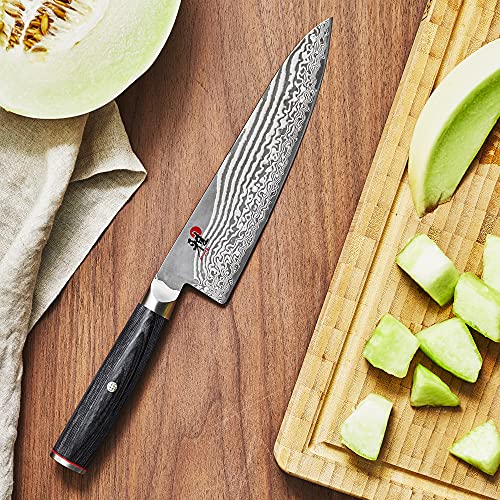
We derive the advantage of Santoku knife from the comparison
Compared with chef knife .
Some Santoku knives are sharpened on one side of the blade only. This is the traditional Eastern way and enables the chef to have greater control over the direction of cutting. Most Santoku knives are a hybrid of West meets East, in that the shape of the blade is curved with a flat cutting edge and the sharpening is 50/50 on either surface. This makes for easier sharpening and maintenance with a traditional steel or pull through sharpener.
A Santoku knife is ideally suited to precision work thanks to the light, narrow blade, which can make thinner cuts, as less food has to be pushed out of the way as the blade makes each slice. Japanese knives require a different technique to Western knives in that they slice through food in a forward and backward motion, rather than Western knives which require a rocking motion, which generally creates thicker slices and takes longer to cut than the quicker Santoku blade.
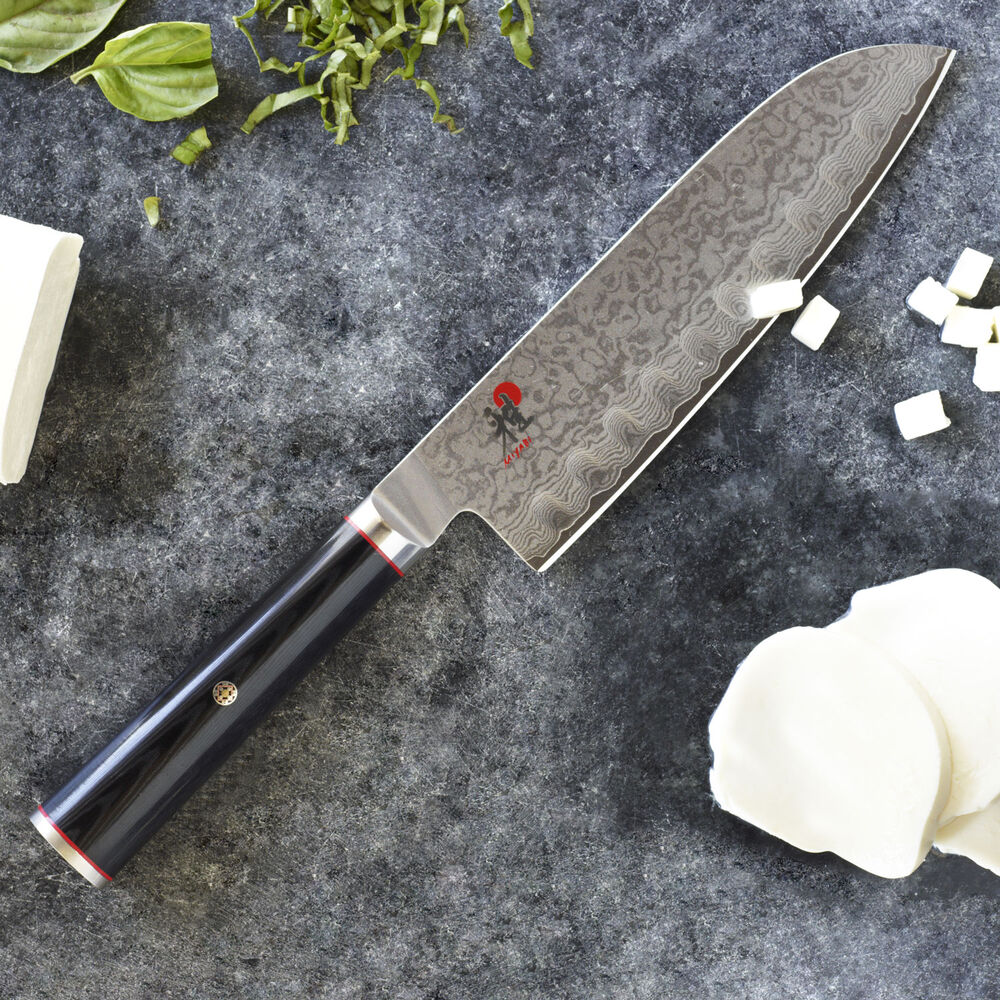
Compared with German knife .
Most kitchen knives are made of various types of steel. Hardness varies among different blends depending on the ratio of carbon to iron that they contain. The more carbon included in the blend, the harder the steel. Japanese knives tend to use steels and forging techniques that have more carbon than German knives resulting in higher numbers on the Rockwell scale, which is the standard by which material hardness is measured. This means Japanese knives can get sharper and have better edge retention over time.
German and Japanese knives also differ in their shape and use. German knives tend to have a wider rounder body that is good for cutting with a rocking motion. Japanese gyutous (chefs knives) tend to have a lean, tighter profile, better suited for precise cutting and elaborate knife work. Although Japanese fish knives are great for many purposes, knife makers excel at a variety of shapes that are perfectly geared for specific jobs.
Let me recommend a Santoku knife that I like
Miyabi Knife Miyabi Fusion 7″ Santoku Knife
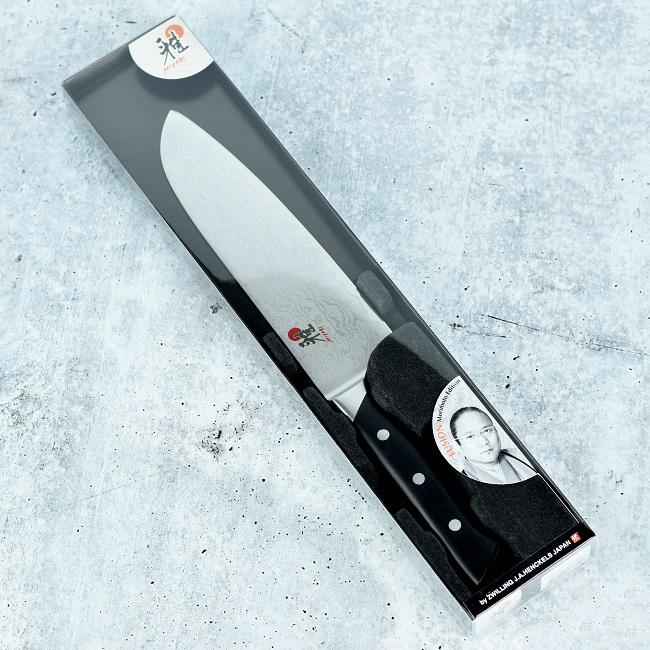
Features
VG10 (CMV60) super steel encased by 64 layers of softer steels, creating a Flower Damascus design
60 Rockwell hardness; special ice-hardening Cryodur process maximizes the properties of the steel
Traditional Japanese 9-12° cutting edge, sharpened using a honbazuke blade-honing technique by master craftsmen in Seki, Japan
Triple riveted Western style handle with full tang and eye-catching red accents
Handcrafted by expert artisans in Seki, Japan with a lifetime warranty; hand-wash only
Description
The Miyabi Fusion Santoku Knife is perfect for mincing, chopping and slicing fruits and vegetables. The durable VG-10 (600D) cutting core is sandwiched by 64 layers of softer steels, each rolled on top of each other creating a ‘Flower Damascus’ pattern. The VG-10 core produces a sharpness and cutting edge retention measurably superior to ordinary knife steels; a complex mix of Cobalt, Molybdenum and Vanadium. The blade is ice hardened using the Cryodur process, which gives the blade optimal edge retention, flexibility, and high corrosion resistance. The Katana edge is hand-finished in the traditional 3-step honbazuke method, reminiscent of the “Hamon” of legendary Japanese swords. Featuring a triple-riveted Western style handle made from a black resin called Duracon, and a full tang with eye-catching red accents. Sharpened to the traditional Japanese blade angle of 9-12° on each side, resulting in a scalpel-like sharpness.
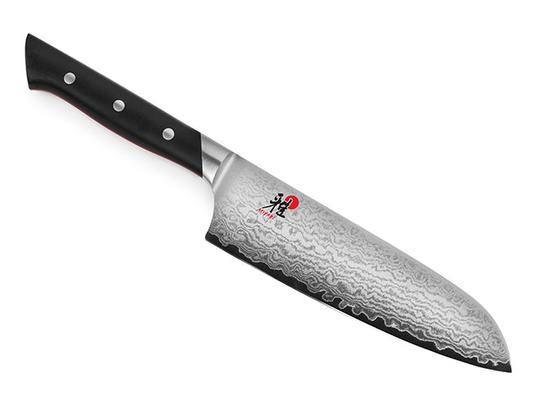
The Miyabi Fusion line was created in collaboration with Iron Chef Masaharu Morimoto. Each blade is finished by master craftsmen in Seki, Japan using the traditional honbazuke blade-honing technique. All knives feature razor-sharp edges of the East with shapes more accommodating to Western chefs. The rounded spine and blade heel design is gentler on fingers and hands. Available in a variety of blade sizes. Hand wash only; Lifetime warranty.
Why choose YIERCITY
We do professional knife set retail and wholesale business. We hope to be your stable global supporter and partner.
We are an enterprise integrating factory and trade, specializing in the design, manufacture and sales of high-quality knife sets.
We always make every effort to ensure the quality of each set of knives.
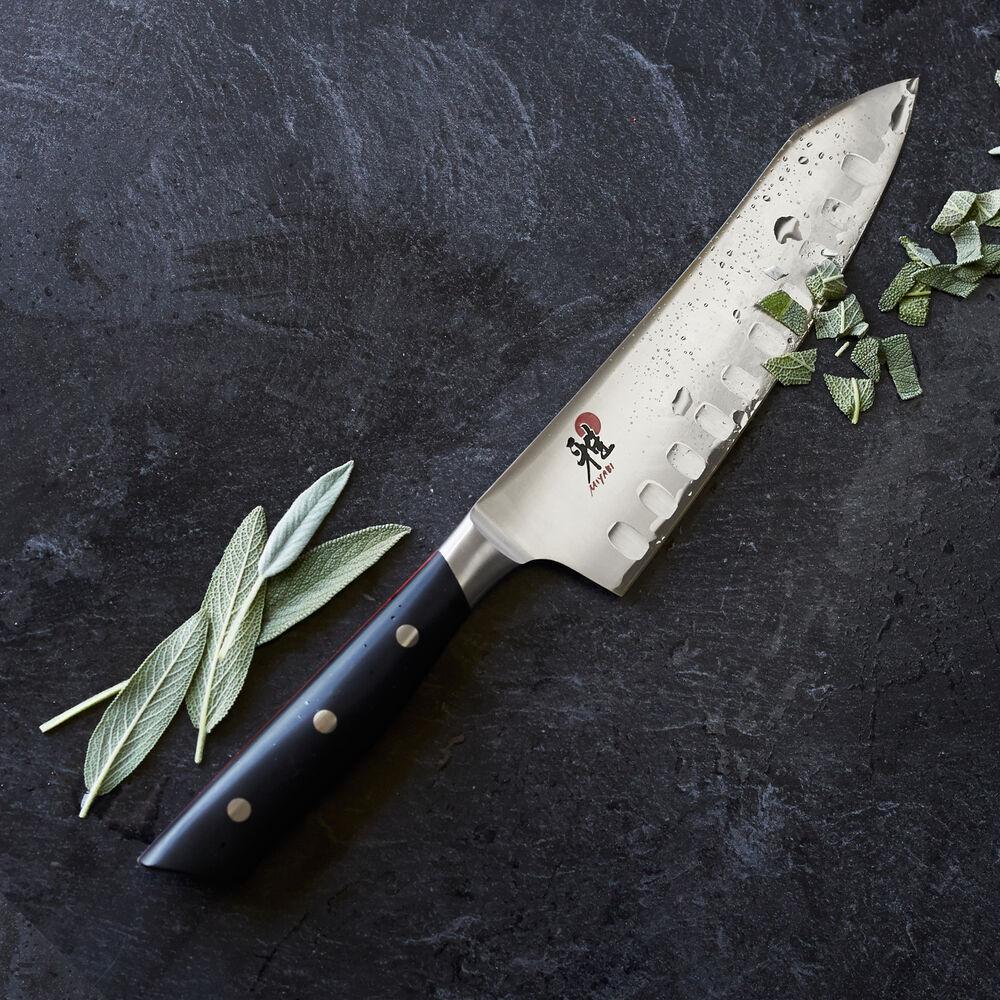
Why choose YIER Knives
● The complete knife set contains all kitchen knives.
● Delivery from the local warehouse, within 3 days.
● Manufactured in our own factory, cost-effective.
● Transparent acrylic knife holder, like a work of art
● Excellent materials, safe and durable.
● Free returns
● We listen to customer needs and feedback.



























